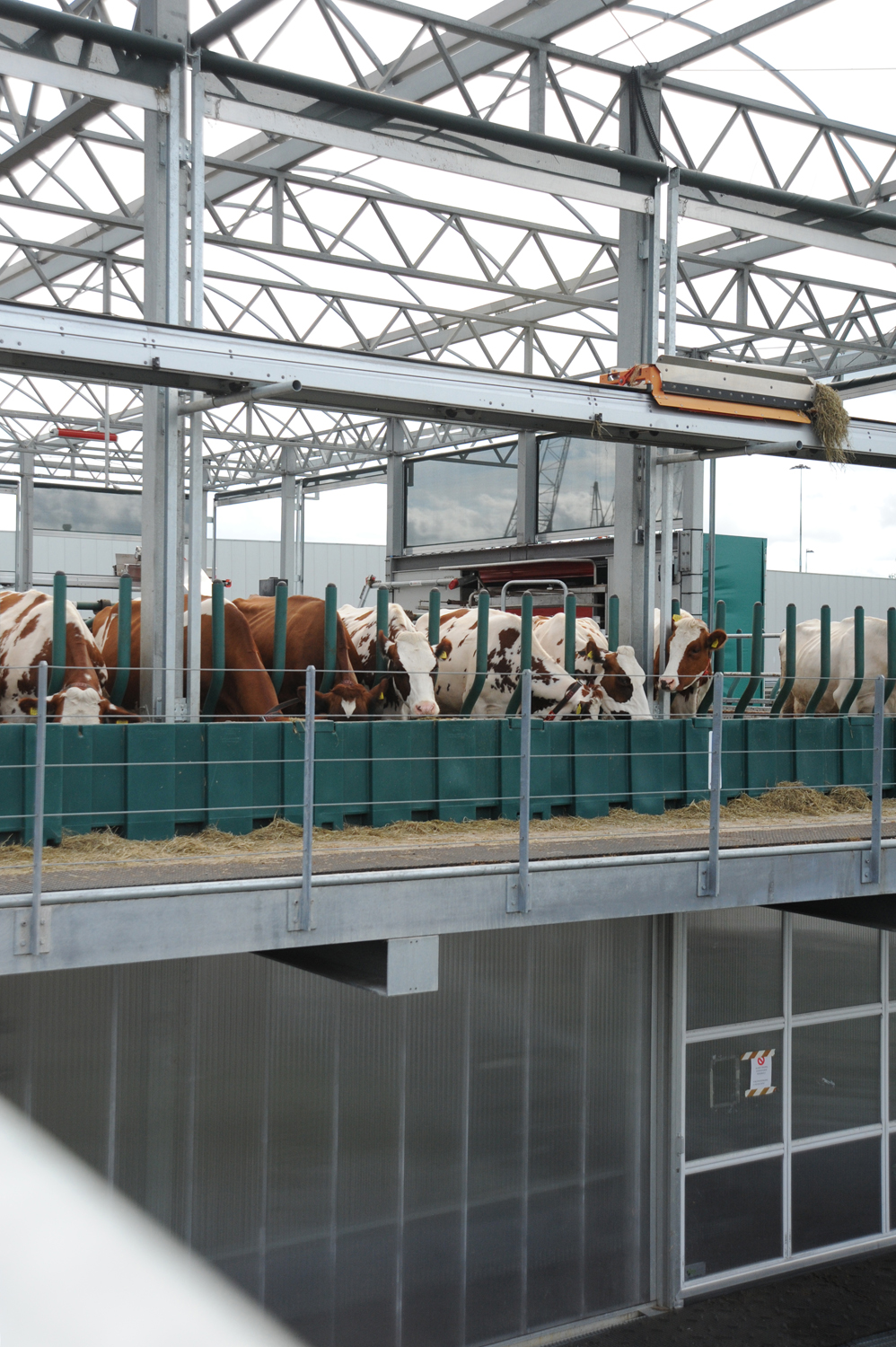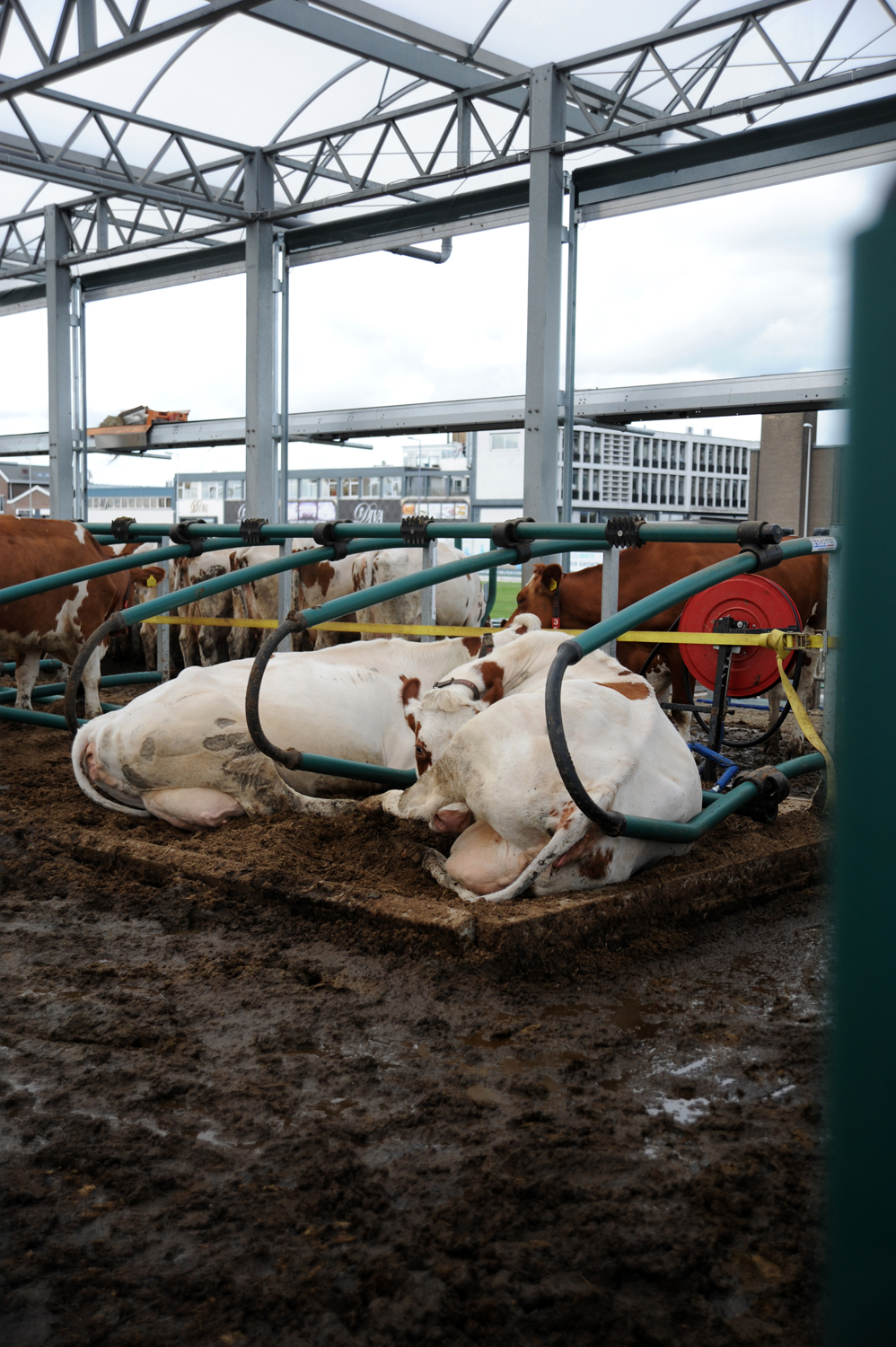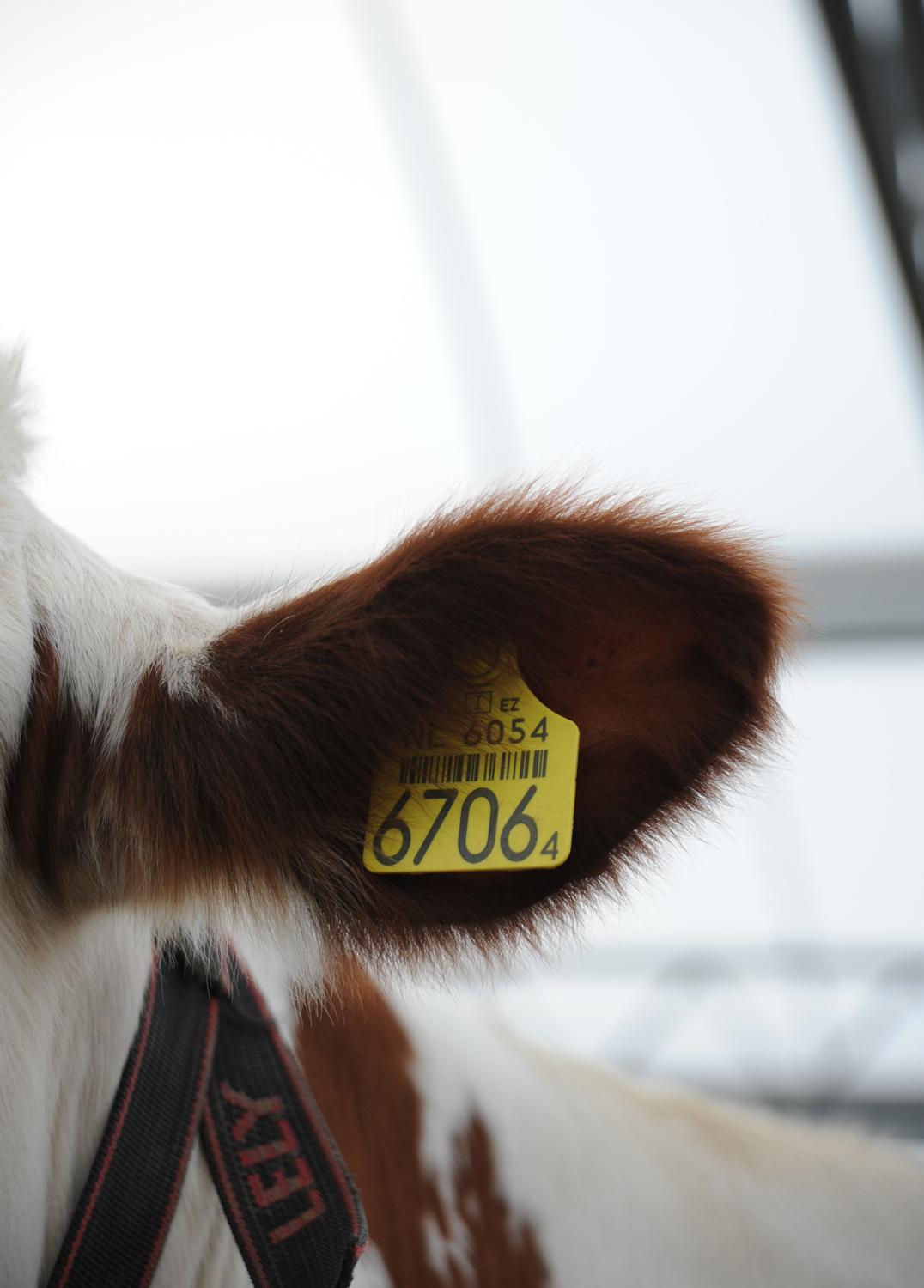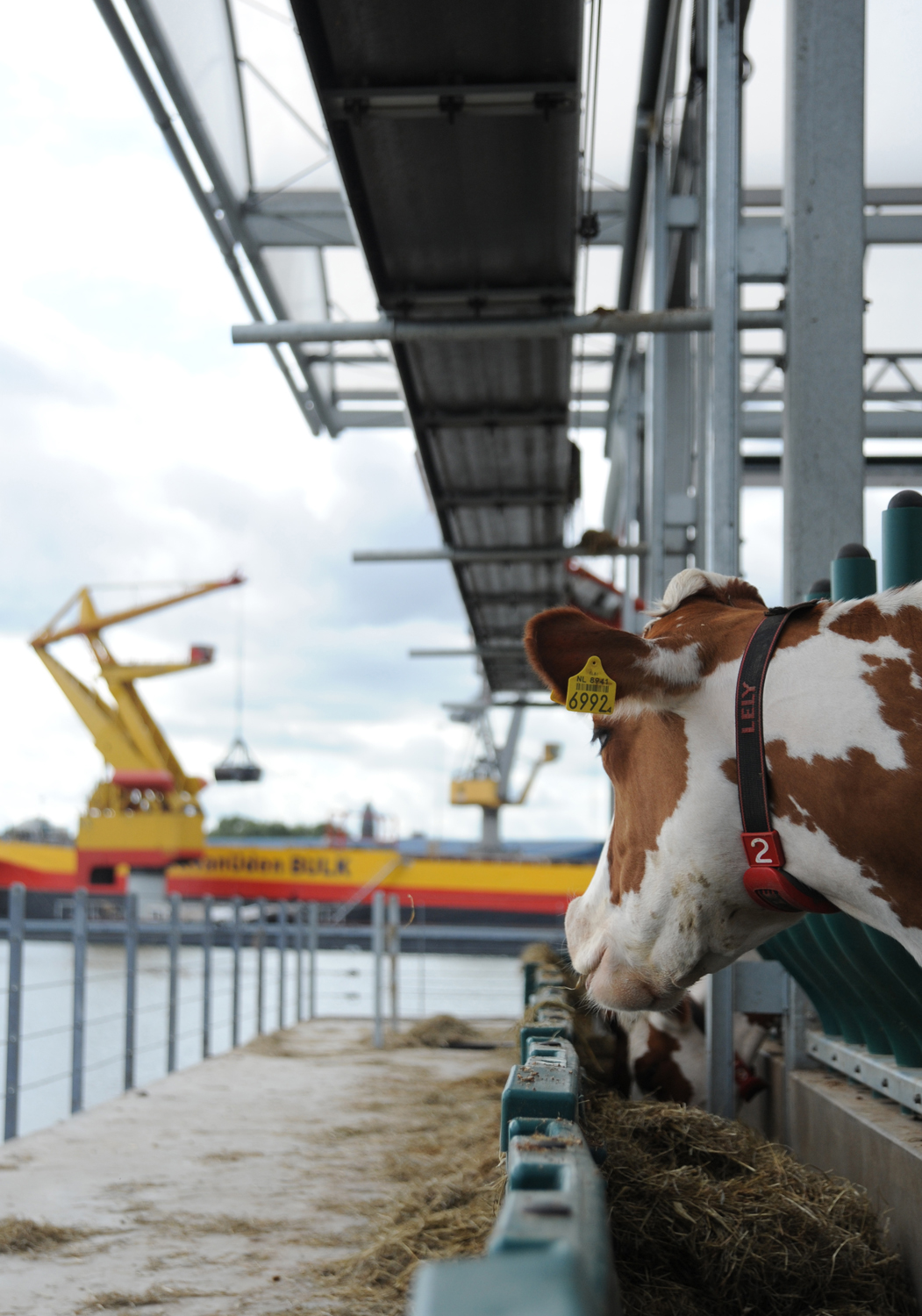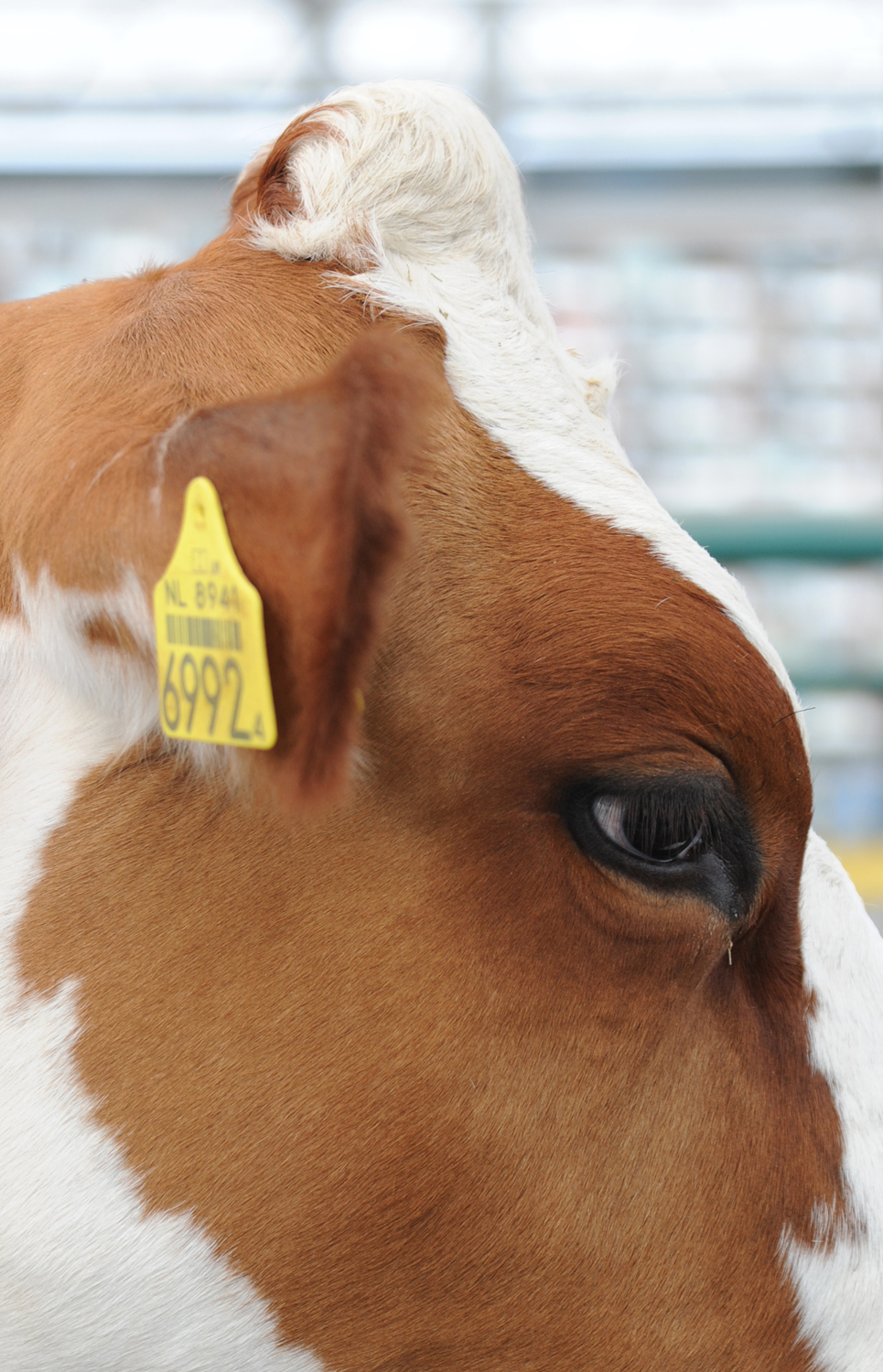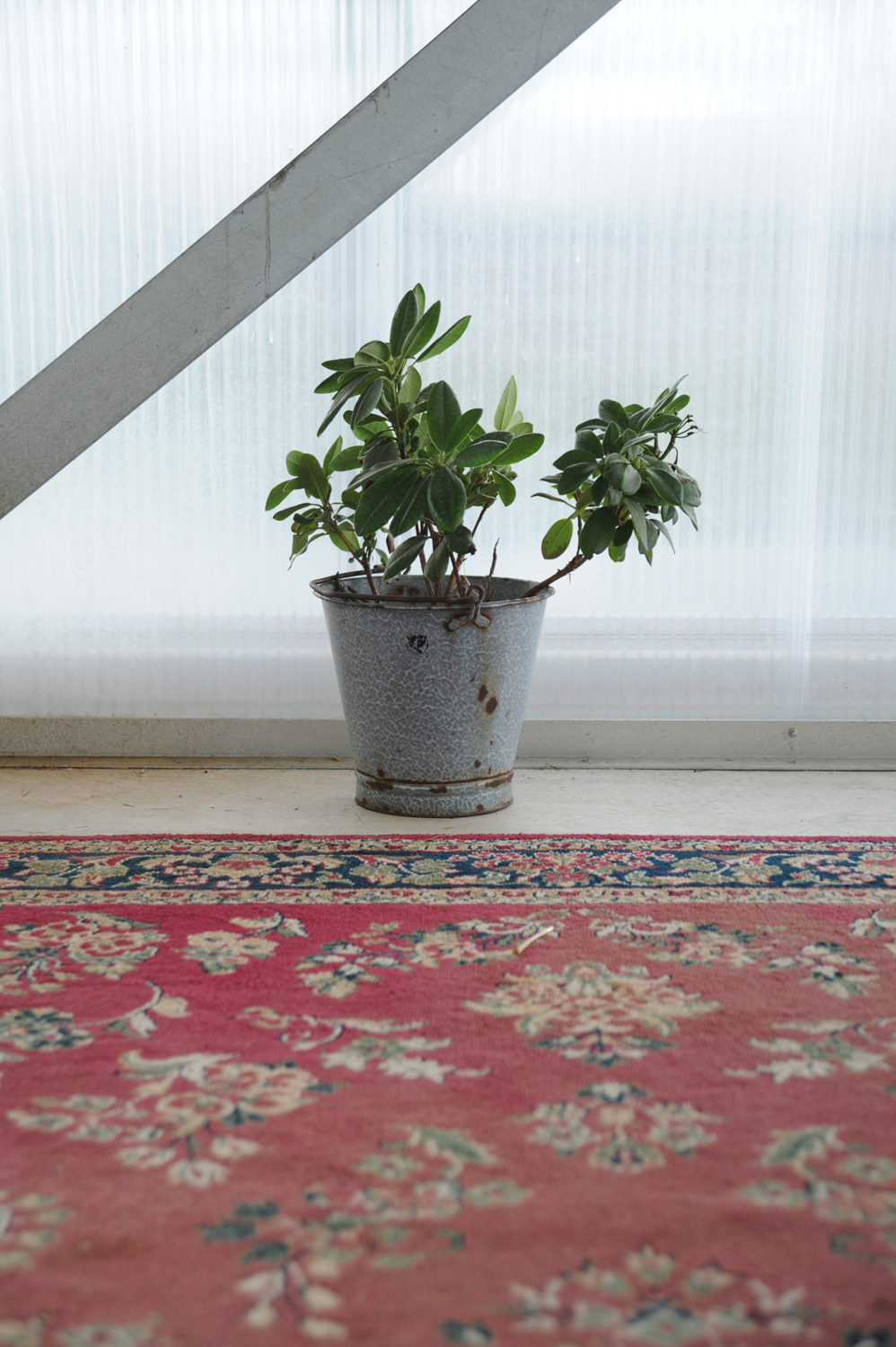I’ve been wanting to visit the floating farm since I heard that it was being built, I’ve been patient. I’m interested in food production, in processing and processes, in environmental innovation, and I like cows.
I was welcomed by Minke van Wingerden, who handed me a small plastic bottle of cold velvety milk, fresh from the previous day – pasturised, homogonised and bottled on site. (I had been expecting unhomogenised milk with the cream on top, but apparently this is not in demand in the area).
The floating farm opened in the summer of 2019 in the busy port of Rotterdam and now houses 35 red and white Maas-Rhine-Ijssel cows. It’s a compact and fascinating production plant which I am yet to fully understand, or maybe just yet to embrace.
The cows live, work (I class milk production as their job, even if it is forced employment), eat and sleep on the platform as it moves up and down on the water by up to two metres, tethered by the piles it’s centered on.
They are fed with hay, laced with leftovers from beer production and other tasty waste. Food troughs around the outside of their enclosure allow visitors to get up close and personal with the cows – whether they like it or not!
A robot milking machine lures the milk laden ladies with cookies, the machine reads the tag on their ears to determine if they need milking yet or they are just abusing the snacking station. The milk is then sent straight downstairs for processing and bottling.
Unlike on grass, the cows waste doesn’t have the space or other environmental factors to enable the formation of dried cow pats or the natural filtration through the ground. Instead, on the platform, a robot scoots round and scoops up the poop. The poop goes into a poop chute. A poop processor separates solids from fluids, and the liquid is piped off into large tanks to be collected for disposal elsewhere, whilst the dry matter is repurposed as bedding materials for the cows to sleep on. There’s no mud on the platform, everything brown you see there is excrement – cows make a lot of poop!
Across the bridge from the milk production pontoon is a small paddock for the cows to exercise and graze in. In the few months they’ve been there they’ve not yet had the chance to leave the platform, but when they do, now they have their sea legs, I wonder if the cows will get motion sickness.
From the platform, looking across the water, on the land, you (and they) can see the calves that have been removed from them. Three girls, two boys, destined for milk and meat. Skittish little things, big eyes, soft coats, very cute.
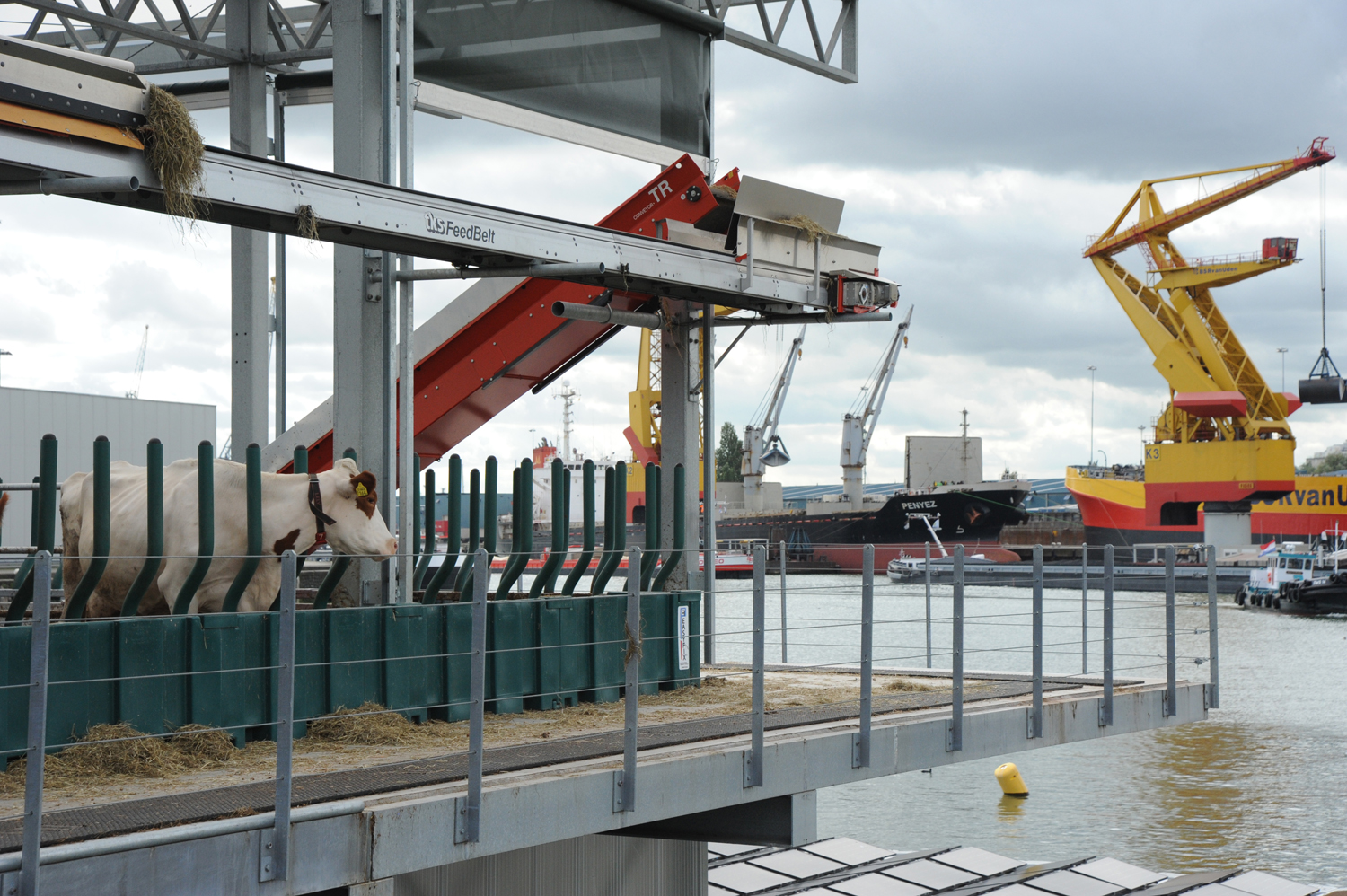
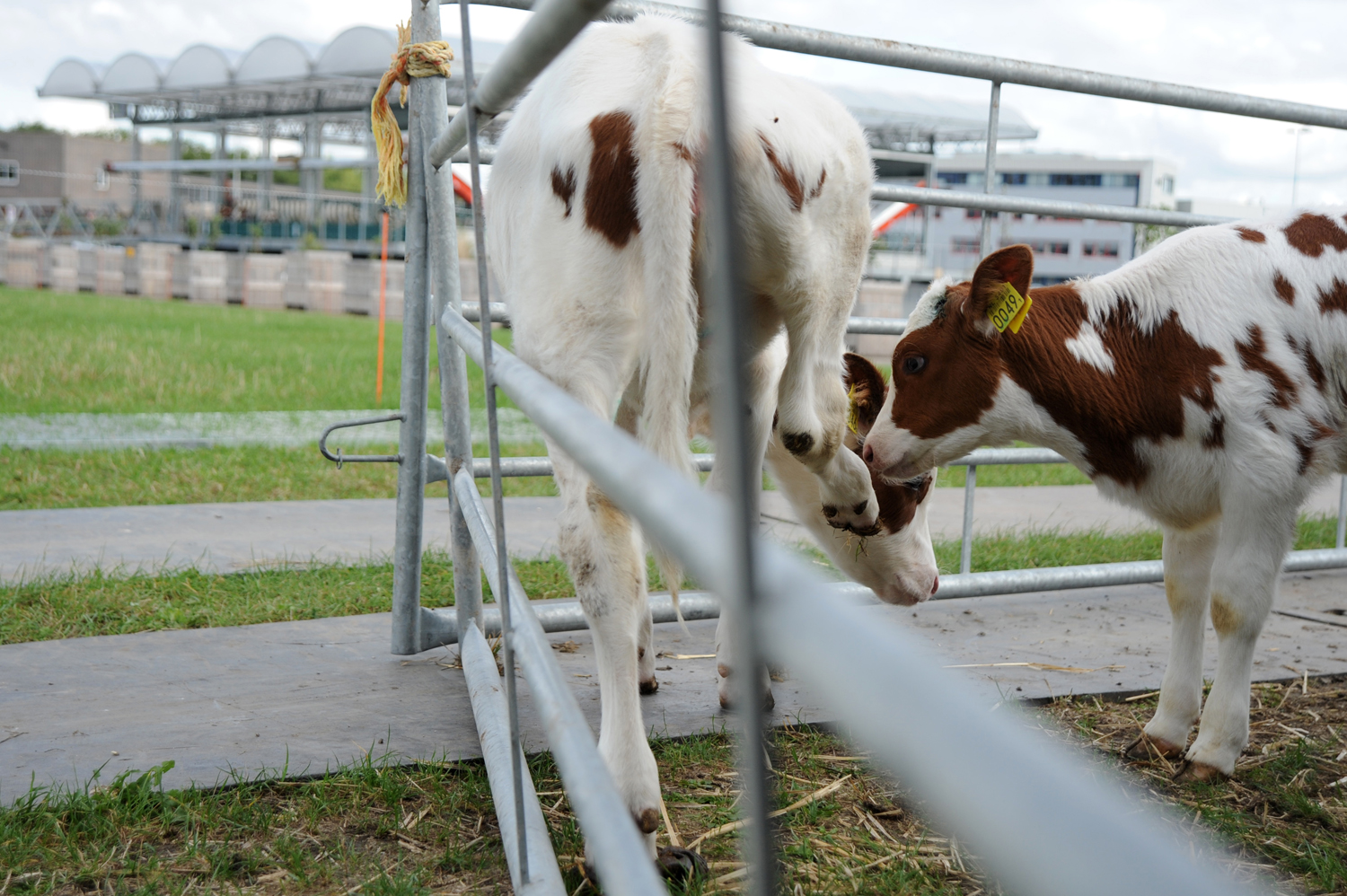


The concept of the floating farm is to bring food to the city, save food miles, and save space. I can see the benefits for the humans, but I’m not sure what the cows get from it.
Minke told me that they developed this farm because of concerns about rising water levels, the changing environment, transport and space, and because they want people to be able to come and see how hard the farmer works.
They call it Transfarmation.
I have so many questions, and I think the floating farm team do too. We should always ask questions – that’s where true innovation comes from. This floating dairy farm is the first in the world, a prototype, something to be learned from, a work in progress to be developed, and improved.
What happens to the land the cows would have normally grazed? Animals grazing land is a big part of land management, a big part of fertilization and regeneration, what will that space be used for instead?
Will the cows be as happy on a floating farm as they would be in fields? Does this affect their milk production, or quality of produce? Does it affect their longevity of production? More importantly, does it affect their quality of life?
What’s the difference in ‘food miles’ between bringing milk from a rural farm to a city shop for sale, and having one city spot where everyone goes specifically to buy and collect milk?
Will that paddock be big enough for 35 cows and their 140 hooves, stomping, grazing, pooping? The slurry robot is struggling to keep up with the job on the platform. Where does all that waste go when the lorries come to collect the full tanks of fluids?
Where do the tiny plastic milk bottles come from? Where do they go? Could they be replaced with glass?
What about the cost of the materials (financially and environmentally) of creating platforms for cows? For the building and maintaining, for the shipping of materials, for the production of the solar panels that run the machines, for the robots that have replaced the work of men – milking, feeding, muck shoveling.
Have we just got really lazy and selfish?
Ultimately, if we don’t have space to meet our demand, perhaps we should stop demanding so much?
I don’t know the answers, and I certainly don’t mean to sound righteous – I drink milk, I eat meat. I’m kind of asking, kind of thinking out loud, looking for conversation and thought, for explanations and further innovations.
I really hope the floating farm encourages people to learn about food production, to think about their own intake and waste, to think about animal welfare, and to cut down on consumption. I hope the extra knowledge about where food comes from helps us to reconsider what we buy, what we use, and what we might otherwise throw away.
As a visitor attraction as well as a working project, I hope the balance here swings away from that of a novelty cow petting pontoon and more towards a place of education and development. And really, I’d like to see the cows back in the fields where they belong.
These living creatures exist solely for our purposes and every day I wonder, are doing the right thing by them?
Floating Farm Gustoweg 10, 3029 AS, Rotterdam
With thanks to Floating Farm for inviting me to visit and ask questions. As always, my opinions are my own.



